Cape Town Road Trip, Klein Karoo, Karoo & Free State - January & February 2021
ROAD TRIP ON THE DIAGONAL – PHASE 5
HOME, VIA THE KLEIN KAROO, KAROO AND THE FREE STATE
It has taken me some time to pen the words to this, the final phase of our epic road trip from the Lowveld to Cape Town and back.
The reason is that I lost all the RAW images of the trip and subsequently my mojo for travel writing. The suspected cause is badly co-ordinated interaction between a pet, myself, my laptop and its recycle bin.
Let me pontificate on this:
- Ensure regular back-ups of treasured electronic data on your electronic devices;
- Do not leave your laptop open, on, with a file selected, and leave the room;
- Do not blindly empty your recycle bin every time you notice something in it, even if you are an OCD, minimalist, perfectionist Virgo.
Anyway, my mojo is back, and I’ll be recovering images from posts on Gesigsboek. Please excuse the reduced quality of posted pics.
We left Franschhoek for the N1 and the Huguenot Tunnel, that magical gateway to the Breede River Valley. The valley where us Saffas continue producing wine of equal, if not better quality, but with much less snobbism than in the Cape Winelands.
We sideswiped Worcester and its rugged mountains and clocked in for breakfast at the eye-catching, modernistic restaurant/function venue/tasting room of the Four Cousins winery in Robertson. Tummies full with an excellent English breakfast, we headed to Montagu, where David Kramer apparently liked to sit drinking muscadel with his feet on a springbok skin rug … it sounds much more fun in Afrikaans, I promise you.
I have been to Montagu several times and the Cogmanskloof Pass with its “hole in the wall”-tunnel has always been an absolute favourite with regards to mountain scenery. Montagu still exudes old-word charm with beautifully maintained historical cottages lining the main road. Another attraction in the town is the hot water springs on the northern side of the town.
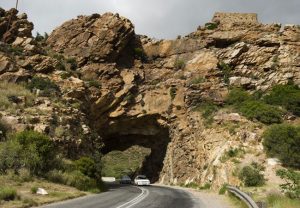 COGMANSKLOOF, PHOTOGRAPHER UNKNOWN
COGMANSKLOOF, PHOTOGRAPHER UNKNOWN
We headed east, however, on the famous Route 62 into the Klein Karoo and Barrydale, Ladismith, Zoar and Calitzdorp swept past too fast for my liking. We did leap out at Ronnie’s Sex Shop, just outside Barrydale, for a few record snaps, but the Gamkaberg Nature Reserve was calling (gate closing time, in true CapeNature tradition, being 16h00).
Gamkaberg, a “replacement booking” was the treasure of the trip. The name Gamka is derived from the Hottentot word “gami”, meaning “iron”. The reserve is situated midway between Calitzdorp and Oudtshoorn and made up of 80 000ha of protected areas, some are privately owned stewardship nature reserves. The reserve was established in 1974 to conserve the local population of Cape Mountain Zebra and their natural habitat. The geology of Table Mountain quartzites and Bokkeveld sandstone is home to four of the South African biomes, namely, Fynbos, Succulent Karoo, Subtropical Thicket and Evergreen Forest. In other words, lots of interesting plants and trees to see and photograph. The reserve also focuses attention to the Khoisan history of South Africa and has a unique labyrinth to soothe the soul. The above borrowed from the titbit-rich reserve information leaflet.
Fauna-wise, the reserve is home to the zebra, mentioned above, Leopard, Honey Badger, Caracal, Eland, Grysbok, Grey Rhebuck, Aardwolf, Aardvark, etc., etc. At the risk of sounding boooooring, I have to record that we need to get back there, spend more time and see all this, especially the promised aard-brothers.
Being a weekday, we had the walking trails and small communal campsite to ourselves. The facilities were in tip-top shape and the campsites lovingly set out between privacy screens, each with a level cemented tent-base (like docking stations complete with metal eyes for tent ropes), a wooden picnic table, two wooden reclining chairs and a drum braai with grid. There is also a communal fire pit. All sites have electricity. There is no shop, but firewood can be bought at reception.
We managed to fit in the Spekboom Trail (1.3km) on the afternoon of arrival and the Pied Barbet Trail (4.1km) the next morning before leaving and the scenery was spectacular. The only unhappy person was the baboon who got the fright of his life when he saw us approaching on the trail and scarpered up a vertical rock face shouting insults at us, barely discernible above the sound of the avalanche of pebbles his ascent precipitated.
After that, we were on the road again, at Oudtshoorn back on the N12, not stopping to see the famous Cango Caves or any ostrich mansions (to be pursued on a next trip). At De Rust we joined the R341 and then the N9, which took us into the Karoo proper, through Aberdeen to Graaff-Reinet, the fourth-oldest town in South Africa (after Cape Town, Stellenbosch, and Swellendam). Established in 1786, it was named after then-governor of the Cape Colony, Cornelis Jacob van de Graaff, and his wife, Reinet (https://en.wikipedia.org/wiki/Graaff-Reinet).
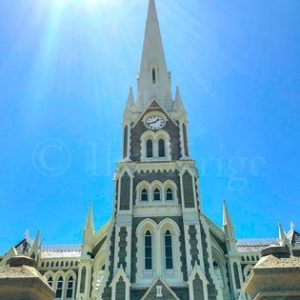 DUTCH REFORMED CHURCH, GRAAFF-REINET
DUTCH REFORMED CHURCH, GRAAFF-REINET
This beautiful historical town is famed for its beautiful Dutch Reformed church building reminiscent of the architecture of Salisbury Cathedral in England. Several museums and preserved historical sites beg for attention as well. For the nature-lovers, there is The Valley of Desolation with its spectacular rock formations and views over the town. The Valley of Desolation forms part of the Camdeboo National Park, where we were headed.
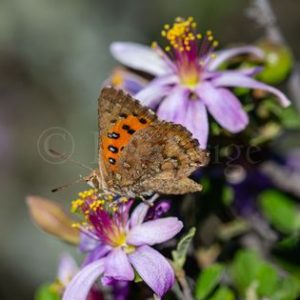 CROSS-BERRY FLOWER, CAMDEBOO NATIONAL PARK
CROSS-BERRY FLOWER, CAMDEBOO NATIONAL PARK
The Karoo Nature Reserve was established in 1979 when the International Union for the Conservation of Nature and the World Wildlife Fund recognised the urgency for conservation measures in the Karoo biome. Camdeboo National Park was proclaimed as South Africa's 22nd National Park under the management of South African National Parks in 2005.
The plan is to ultimately link the park with the Mountain Zebra National Park, protecting a huge diversity of plant and animal species. Once again, the endangered Cape Mountain Zebra has centre stage.
The area has a rich history with early, middle and later stone age people, Khoisan hunters and herders, the Inqua tribe and white farmers each taking a stage bow. Evidence of occupation by these people can be found in various areas of the park, with the presence of farming causing the most lasting damage in the form of over-grazing and the introduction of exotic plants. This sadder part of the heritage is slowly being erased and we saw a variety of plains game on our drive through the park.
Info from:
https://www.sanparks.org/parks/camdeboo/
https://en.wikipedia.org/wiki/Camdeboo_National_Park
Accommodation consists of a tented camp and well-maintained campsites with clean and well-equipped communal ablutions and kitchen facilities (bring your own food, cooking vessels, cutlery and crockery).
We plan to return to explore the town better, perhaps patronising one of the many lovely guest houses in town. A sunset photoshoot in the Valley is also on the cards.
The next morning saw us back on the N9 to Colesberg where we re-joined the N1 north. We were heading back into the Free State province. At Winburg we turned off on the N5 towards Bethlehem and after that we took the R712 to the fabulous Clarens (named after the town in Switzerland where Paul Kruger died in exile) and the spectacular Golden Gate Highlands National Park.
Words cannot describe the beauty we saw. The pastel-coloured rock formations were as amazing as always, but the good summer rains had turned the Southern Free State into an undulating field of green grass amidst which the Back Wildebeest became mere perambulating heads and Black-backed Jackals only suspicious rustlings until they popped out into the open for a moment or two.
The first inhabitants of the area were the Khoisan who found shelter under the many rock overhangs. After them, the Basotho and Europeans dominated, including the Voortrekkers who trekked through this land when it was still savage and raw.
A Van Reenen bought a piece of land in the valley in 1878. Moving to their new farm, the family saw the sun setting behind two magnificent sandstone cliffs. The sun’s rays casting delicate shades against the sandstone cliff-face inspired the name Golden Gate.
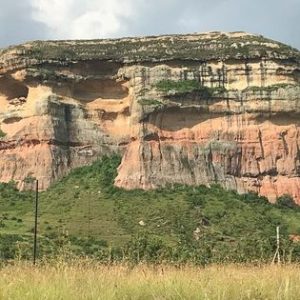 GOLDEN GATE HIGHLANDS NATIONAL PARK
GOLDEN GATE HIGHLANDS NATIONAL PARK
During the Anglo-Boer war, the retreating Boers abandoned their heavy ammunition wagons in the valley. To avoid the British getting their hands on the ammunition, the Boers set the wagons alight. The intense heat from this fire scorched the earth, and there are some areas in the park which are still sterile.
The South African government bought Golden Gate and in 1963, a National Park was established expanding over the years to the current 11,630Ha and bordering on the Qwa Qwa National Park and Lesotho.
https://www.sanparks.org/parks/golden_gate/
We saw pregnant black clouds ahead as we approached the Glen Reenen campsite and promptly decided to chicken out of camping. The efficient receptionist upgraded us to a chalet with the credit balance we still had from 2020. Sure as God made little green apples, the heavens opened and well and truly pi$$ed on Braai Twit’s parade. Luckily the neat and spacious four-sleeper chalet was well-equipped, and we would oven-grill our Karoo lamb chops, which went down well with a bottle of Riebeek Valley Wine Co wine from our quickly diminishing stash.
The generous rain overnight scuppered our plans to go and see the gushing waterfall just above the chalets, the muddy track deflating our ardour instantly. We took a quick drive to the well-designed Vulture hide (with photographers and cold weather in mind), but the empty pantry at the restaurant meant no birds. There were plenty of pretty wild-flowers next to the pathway though (photos all deleted, alas).
When the wheels touched the tar the “horse-smelling-water” syndrome kicked in and we headed home, ears tucked flat against our heads. Of the route I remember nothing besides Warden and Standerton flashing by and us, joining the N4 into Mpumalanga, heading east to Mbombela (Nelspruit) where we were almost on home-turf and hitting the R40 north, and home, to Hoedspruit. “More exploration required here as well”, she notes in her little black book.
What a trip! We visited 7 provinces and travelled on 7 national roads and we are crying for more. Let the planning (and saving) commence!



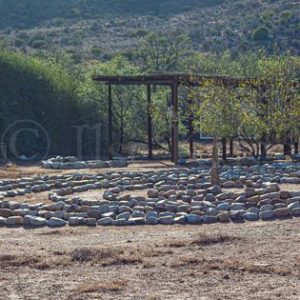
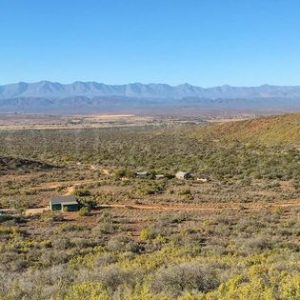
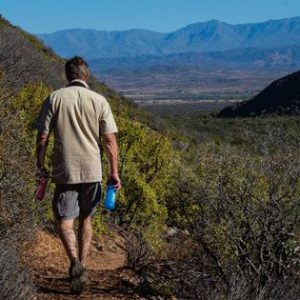
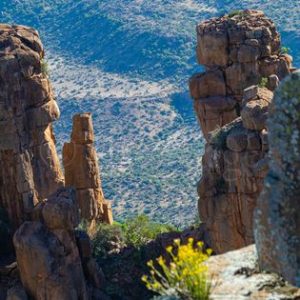
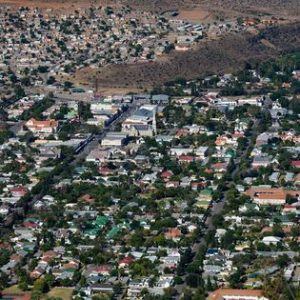

Great stuff!